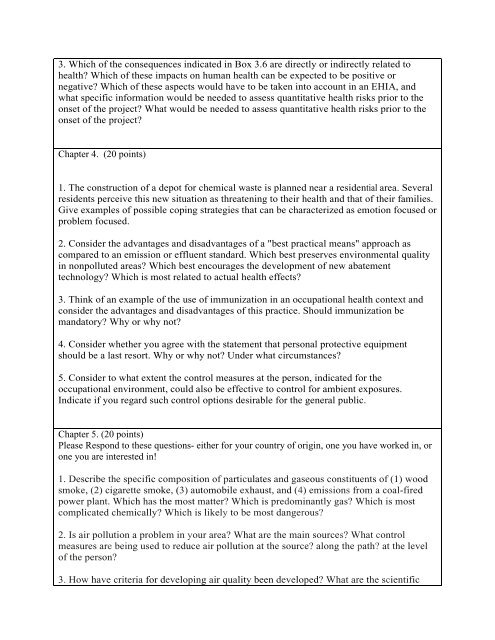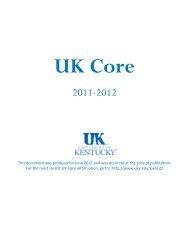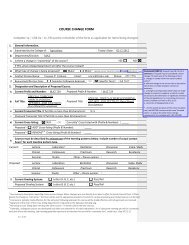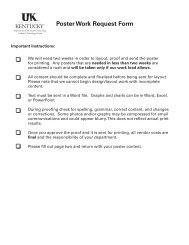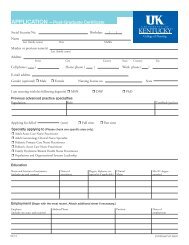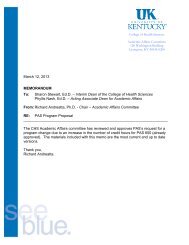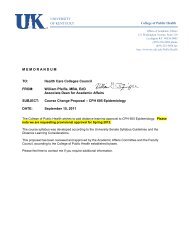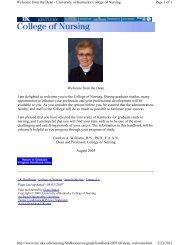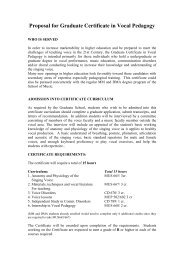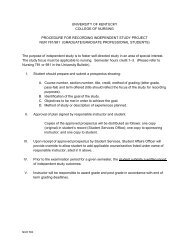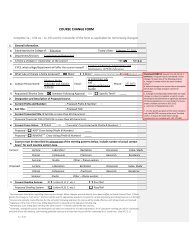CPH 601 - University of Kentucky
CPH 601 - University of Kentucky
CPH 601 - University of Kentucky
Create successful ePaper yourself
Turn your PDF publications into a flip-book with our unique Google optimized e-Paper software.
3. Which <strong>of</strong> the consequences indicated in Box 3.6 are directly or indirectly related to<br />
health Which <strong>of</strong> these impacts on human health can be expected to be positive or<br />
negative Which <strong>of</strong> these aspects would have to be taken into account in an EHIA, and<br />
what specific information would be needed to assess quantitative health risks prior to the<br />
onset <strong>of</strong> the project What would be needed to assess quantitative health risks prior to the<br />
onset <strong>of</strong> the project<br />
Chapter 4. (20 points)<br />
1. The construction <strong>of</strong> a depot for chemical waste is planned near a residential area. Several<br />
residents perceive this new situation as threatening to their health and that <strong>of</strong> their families.<br />
Give examples <strong>of</strong> possible coping strategies that can be characterized as emotion focused or<br />
problem focused.<br />
2. Consider the advantages and disadvantages <strong>of</strong> a "best practical means" approach as<br />
compared to an emission or effluent standard. Which best preserves environmental quality<br />
in nonpolluted areas Which best encourages the development <strong>of</strong> new abatement<br />
technology Which is most related to actual health effects<br />
3. Think <strong>of</strong> an example <strong>of</strong> the use <strong>of</strong> immunization in an occupational health context and<br />
consider the advantages and disadvantages <strong>of</strong> this practice. Should immunization be<br />
mandatory Why or why not<br />
4. Consider whether you agree with the statement that personal protective equipment<br />
should be a last resort. Why or why not Under what circumstances<br />
5. Consider to what extent the control measures at the person, indicated for the<br />
occupational environment, could also be effective to control for ambient exposures.<br />
Indicate if you regard such control options desirable for the general public.<br />
Chapter 5. (20 points)<br />
Please Respond to these questions- either for your country <strong>of</strong> origin, one you have worked in, or<br />
one you are interested in!<br />
1. Describe the specific composition <strong>of</strong> particulates and gaseous constituents <strong>of</strong> (1) wood<br />
smoke, (2) cigarette smoke, (3) automobile exhaust, and (4) emissions from a coal-fired<br />
power plant. Which has the most matter Which is predominantly gas Which is most<br />
complicated chemically Which is likely to be most dangerous<br />
2. Is air pollution a problem in your area What are the main sources What control<br />
measures are being used to reduce air pollution at the source along the path at the level<br />
<strong>of</strong> the person<br />
3. How have criteria for developing air quality been developed What are the scientific


